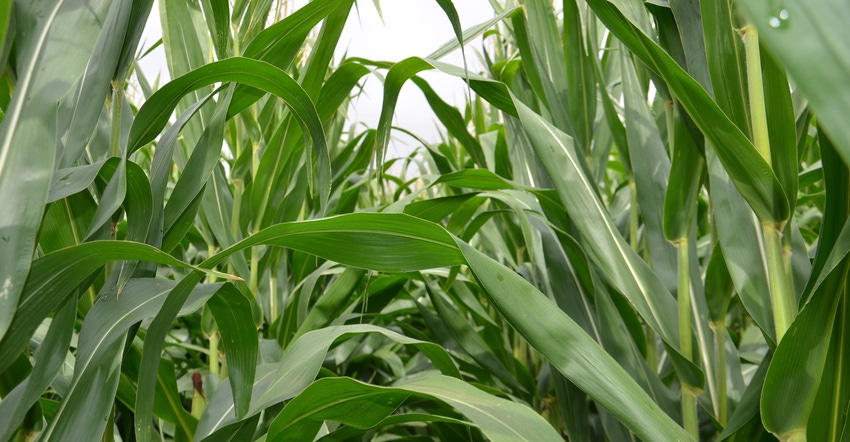
How does this sound for a recipe for high corn yields? First, keep soils wet enough that you can’t plant until May 28. Even then, soils are still plenty “heavy.”
Throw in 10 straight days of rain beginning June 15. A total of 5 inches fall during this stretch, with plants in a couple of small pockets underwater temporarily. By July 4, corn is well above knee-high, but still at least two weeks from tasseling.
Rooting is shallow. Dave Nanda, director of genetics for Seed Genetics-Direct, Jeffersonville, Ohio, observes brace roots are smaller than normal. Some plants don’t even have brace roots, and a few plants are goosenecked from poor rooting, not insect feeding.
Next, add in a stretch so dry that cracks appear in the ground. Mix in an above-normal number of days above 90 degrees F, yet throw in cool stretches with below-normal growing degree days.
Finally, check aerial images provided by a crop consultant, who flew the field with an unmanned aerial vehicle in early August and again in late September. Both times streaks are evident in an uneven pattern across the field that doesn’t quite match up with anything.
Does that sound like a recipe for high yield?
Reap rewards
Start the drum roll now. Despite everything that happened, when harvest wrapped up in this field on Nov. 5, average yield across the 36-acre field, weighed across the scales, was 234 bushels per acre. You read right! There was a small difference between the two hybrids that were planted, but it wasn’t large. Harvest moisture was under 21%.
How is such a yield possible given the opening scenario? “You have to look at what was right in this field,” Nanda says. “It’s productive silty loam soil for the most part, and soil fertility levels are good.
“We checked plant population in several places, and it averaged just above 30,000 plants per acre. Both hybrids represent good genetics. Protection against diseases and insects helped. The farmers controlled weeds, and they applied enough nitrogen. They also applied fungicides to help protect against foliar diseases.”
There was so much talk earlier this year about smaller-than-average kernels and using a higher number for the kernel factor in yield estimate equations, which would produce a lower yield estimate, that it was difficult to believe estimates when some pointed to yields in that ball park, he adds. In this field, one hybrid had exceptionally large kernels and they filled out. The other hybrid had smaller kernels, but more kernels per row per ear.
Dry weather in September prevented stalk rot from developing. However, there were some soil compaction issues in the field. Combined with a preseason anhydrous ammonia application, it may explain some streaking observed from the air.
“The bottom line is that it’s a testament to what good growers can do with modern hybrids and technology, even when the deck is stacked against them,” Nanda concludes.
About the Author(s)
You May Also Like




